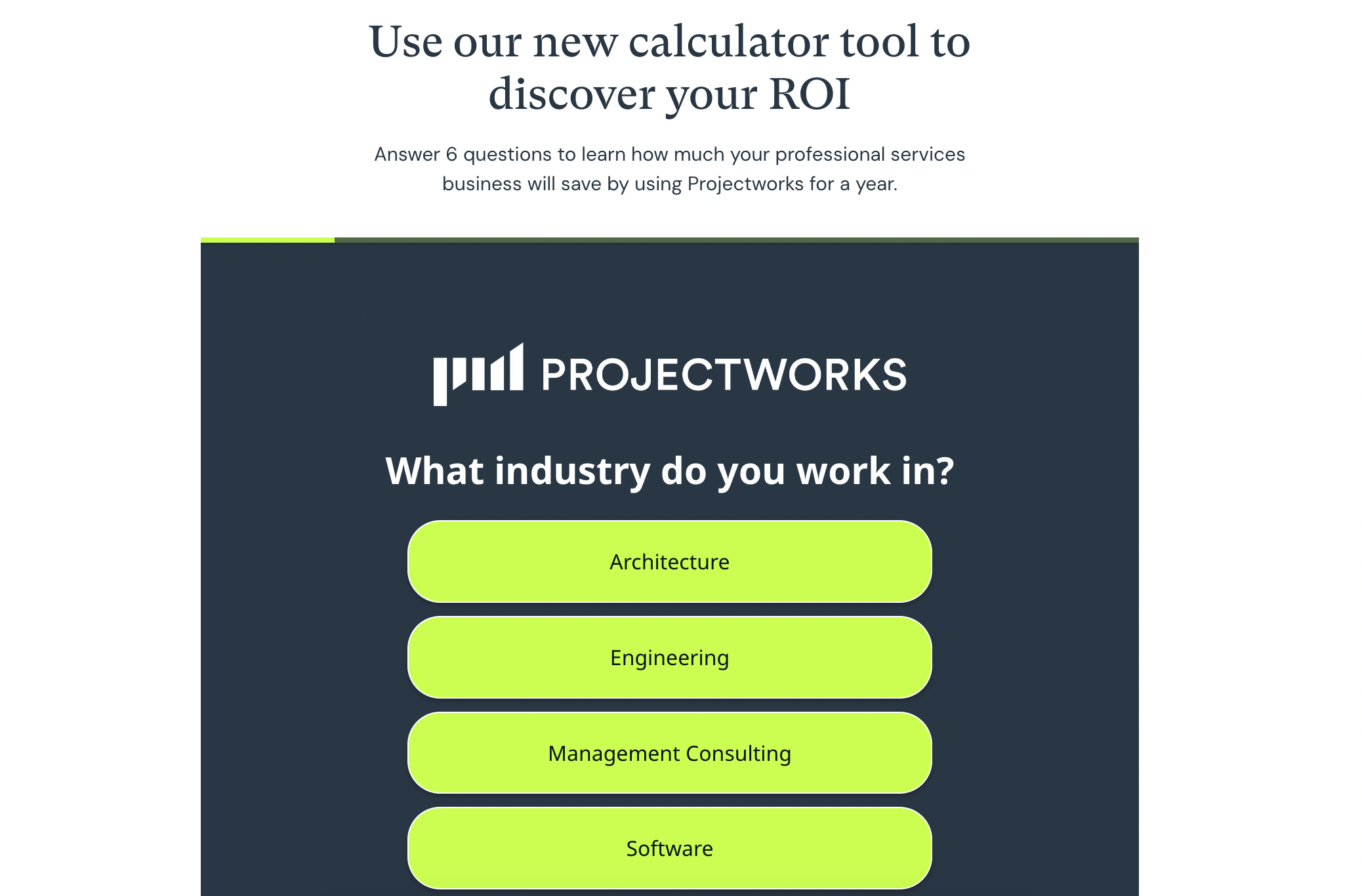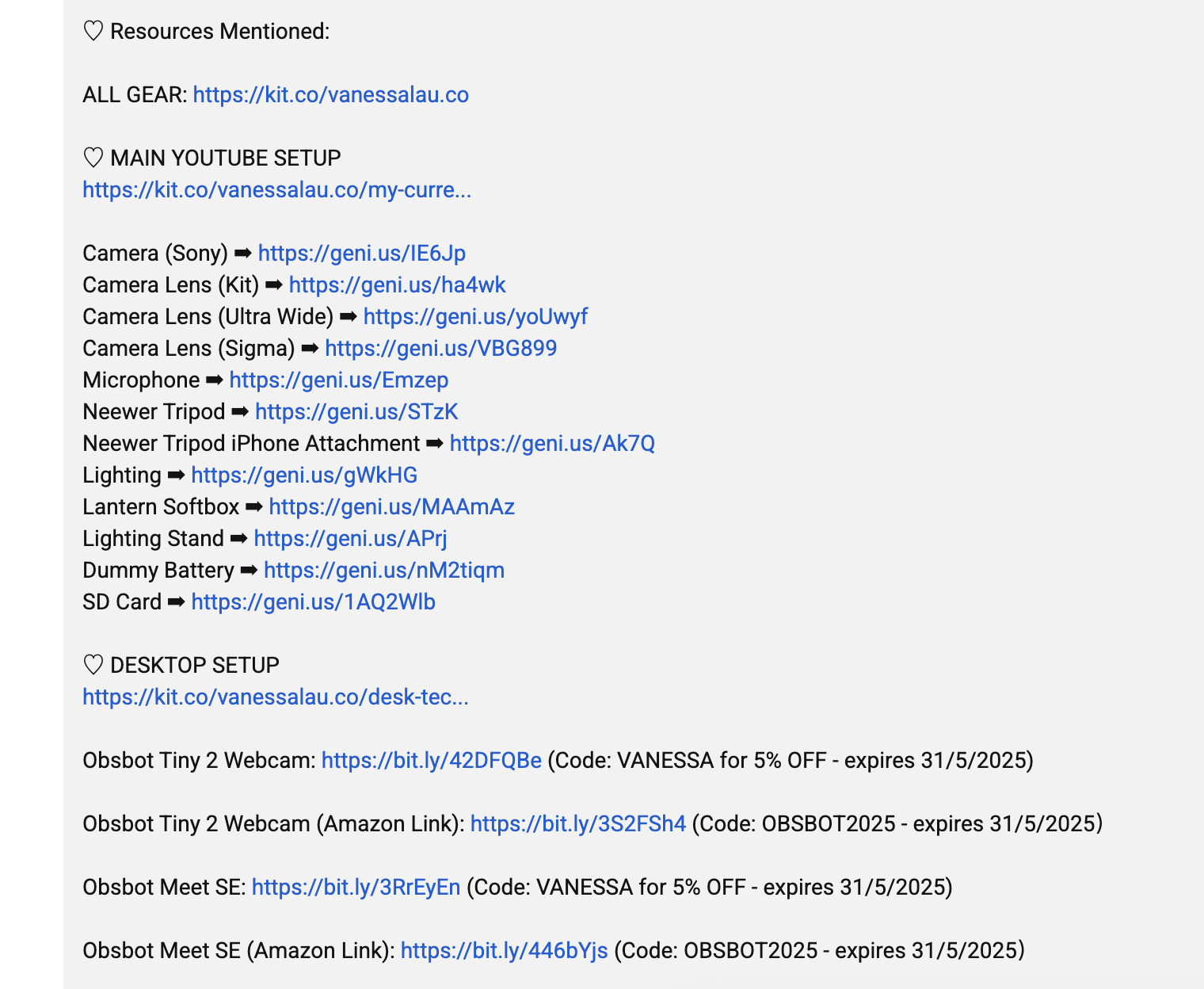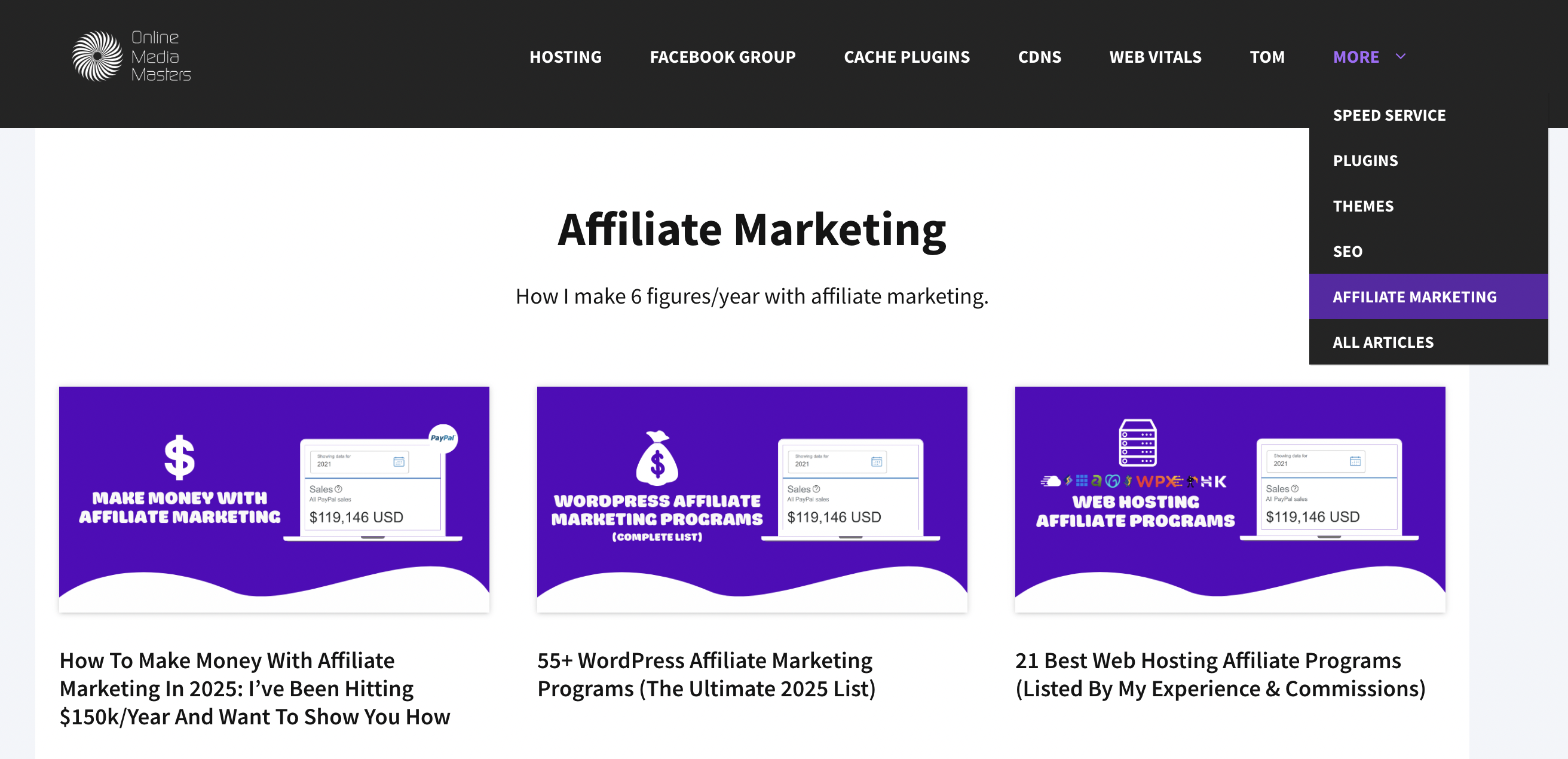Is your affiliate marketing strategy stuck in a rut of endless blog posts? While foundational, written content is just one piece of the puzzle.
To truly dominate in 2025, you need to engage your audience where they are and deliver value in formats that feel fresh, authentic, and incredibly helpful.
It’s time to think beyond the blog post. Here are three unconventional content formats that build trust, drive engagement, and boost affiliate conversions.
1. The Interactive Tool or Calculator
Blogs tell. Tools show.
An interactive tool, like a calculator, quiz, or configurator, provides personalized value that a static article simply can’t match.

ROI Calculator Example
Why it converts:
- Personalization: Delivers results tailored to each user (e.g., “How much can you save with this software?” or “Which product is perfect for your needs?”).
- High Engagement: Users spend more time interacting with your site, strengthening the connection.
- Perceived Value: Feels premium, builds trust, and makes affiliate recommendations a natural next step.
Example: A “ROI Calculator” for a project management tool. Users input team size and hours saved → tool shows potential annual savings → your affiliate link to a free trial feels like the obvious choice.
Pro Tip: Success depends on traffic. SEO is your most powerful and sustainable method to attract an audience actively searching for solutions.
2. The Mini-Course or Email Drip Sequence
Instead of a single 3,000-word guide, break it down into a 5-day mini-course delivered via email. This lets you build a relationship and provide deep, sequential value over time.

Email Course Example
Why it converts:
- Builds your list: The ultimate lead magnet – value in exchange for an email address.
- Positions you as the expert: A guided learning journey cements your authority.
- Direct access: A direct line to your audience’s inbox for timely, relevant affiliate recommendations.
This strategy is a powerhouse for building and monetizing your email list long-term. For a step-by-step process, see our detailed post: How to Build an Email List for Affiliate Marketing (And Profit From It.
3. The “No-Fluff” Video Review or Setup Guide
Video is king, but most affiliate videos are long, rambling, and forgettable. Stand out by creating hyper-focused, problem-solving video content.

Why it converts:
- Authenticity: Showing the product in action builds trust and proves you’ve actually used it.
- Saves time: A concise 5-minute setup guide is far more valuable than a 30-minute monologue.
- Higher engagement: YouTube and other platforms are massive search engines, opening new traffic streams.
Key to Success: Authenticity is everything. Promoting irrelevant products will kill trust. Instead, choose offers that genuinely resonate with your audience. Need help? Our guide on Keyword Research for Affiliate Marketing shows how to uncover what your audience truly wants.
4. The Case Study or Success Story
Nothing builds trust like proof. A well-structured case study highlights real-world results from a product or service you promote.
Why it converts:
- Social proof: Showcasing real users’ experiences reduces skepticism.
- Storytelling power: People connect with narratives more than specs.
- Authority boost: Positions you as someone with insider knowledge.
Example: Document how a freelancer doubled productivity using the tool you’re promoting, then provide your affiliate link as the logical “next step.”
5. The Resource Library or Toolkit
Instead of scattered recommendations across multiple posts, create a centralized, curated resource hub.

Why it converts:
- One-stop value: Visitors bookmark and return to your site often.
- Perceived expertise: A comprehensive toolkit elevates your authority.
- Link magnet: Other bloggers and creators may link to your hub as a reference.
Example: “Ultimate Creator’s Toolkit” – a collection of software, templates, and guides, with affiliate links woven seamlessly.
6. The Challenge or Community Event
Turn affiliate marketing into an interactive experience by hosting a challenge (e.g., “30-Day Fitness Challenge” or “Build Your First Website in 7 Days”).
Why it converts:
- Engagement through commitment: Participants stay involved and motivated.
- Built-In content series: Each day provides new touchpoints for affiliate mentions.
- Community trust: Shared progress fosters peer validation of your recommendations.
Example: A “7-Day Website Launch Challenge” where participants use the hosting service you promote – affiliate links included in daily instructions.
How to Master the Trust Equation: The Key to Affiliate Marketing Success
Affiliate marketing is built on one foundation: trust. Without it, no amount of SEO optimization, fancy funnels, or high-paying offers will matter.
Readers and viewers today are savvy. They can sense when someone is pushing a product they don’t believe in, and once trust is broken, it’s nearly impossible to win back.
That’s why mastering the Trust Equation is the most important skill you can develop as an affiliate marketer.
In this article, we’ll break down what the Trust Equation is, why it matters more than ever in 2025, and how you can apply it to every piece of content you create, without sacrificing conversions.
What Is the Trust Equation in Affiliate Marketing?
The Trust Equation is a simple framework used in consulting, coaching, and now increasingly in online marketing. It breaks down trust into four measurable components:
Trust = (Credibility + Reliability + Intimacy) ÷ Self-Orientation
- Credibility – Do people believe you know what you’re talking about?
- Reliability – Do you consistently show up and deliver on your promises?
- Intimacy – Do your audience members feel safe, understood, and connected to you?
- Self-Orientation – Are you focused on helping your audience, or are you just focused on yourself and your commissions?
When credibility, reliability, and intimacy are high (and self-orientation is low), trust skyrockets. And in affiliate marketing, that trust is what makes people click your links and buy based on your recommendation.
1. Build Credibility Through Real Expertise
Credibility starts with knowledge. If you’re promoting products in a niche you barely understand, your audience will notice. They can tell when advice is generic or surface-level.
On the flip side, when you demonstrate deep expertise, you instantly stand out from the dozens of bloggers and YouTubers promoting the same tools.
How to do it:
- Share your own data, experiments, or results using the product.
- Stay updated on industry trends and reference credible sources.
- Avoid fluff. Focus on actionable insights.
Example: Instead of saying “This SEO tool is great for keyword research,” show your audience how you used it to find profitable keywords, and walk them step by step through your process. That specificity makes you credible.
2. Prove Reliability by Showing Up Consistently
Reliability isn’t built overnight; it’s earned through consistent action. Your audience learns to trust you when you show up regularly with valuable content, and your recommendations prove accurate over time.
How to do it:
- Stick to a content schedule (weekly blog posts, consistent newsletters, or monthly video uploads).
- Test products thoroughly before recommending them. If you promote something and it fails your audience, trust is lost.
- Respond to comments, emails, or community questions. Reliability isn’t just about posting, but also about engaging.
Example: Imagine you recommend a hosting provider and create a detailed setup guide. Six months later, you publish an honest update: “Here’s what’s been working, here’s where they fell short, and here’s how I’d still use them.” That level of follow-up makes your reliability undeniable.
3. Deepen Intimacy With Authentic Storytelling
Intimacy in marketing doesn’t mean oversharing. It means making your audience feel like you understand their struggles, fears, and goals. People trust those who “get them” on a personal level.
By weaving storytelling and vulnerability into your content, you humanize yourself and create a connection.
How to do it:
- Share your personal journey: mistakes, wins, and lessons learned.
- Speak directly to pain points your audience faces (e.g., “I know what it’s like to waste money on tools that don’t deliver.”).
- Use relatable language instead of corporate jargon.
Example: A video review where you show the exact challenges you faced when setting up a new tool, including the errors you made and how you fixed them, is far more intimate than a polished corporate-style demo.
4. Keep Self-Orientation Low
This is the factor that ruins trust the fastest. If your audience senses that you care more about your affiliate commission than their success, they’ll tune out immediately.
Every promotion must start with the mindset: “How can this product genuinely help my audience?”
How to do it:
- Never recommend a product you wouldn’t use yourself.
- Always disclose affiliate relationships upfront. Transparency builds respect.
- Put your audience’s needs before your profit. Sometimes that means recommending a free tool or competitor’s product if it’s truly better for them.
Example: Imagine you write an article comparing three email marketing tools. Instead of pushing only the one with the highest commission, you outline the pros and cons of each and clearly state which one fits which type of user. That honesty makes people want to click your links, because they know you’re looking out for them.
Applying the Trust Equation in Affiliate Marketing
When creating any affiliate content (whether it’s a blog post, video, email sequence, or interactive tool), ask yourself:
- Credibility: Am I showing real expertise or just regurgitating sales copy?
- Reliability: Have I been consistent enough for my audience to trust me?
- Intimacy: Do I make my readers feel understood and supported?
- Self-Orientation: Am I prioritizing my audience’s success over my commission?
By using this checklist, you’ll avoid the pitfalls that so many affiliates fall into, namely, losing trust in the pursuit of quick wins.
Ready to Start Your Affiliate Journey?
Affiliate marketing doesn’t have to be all blog posts anymore. By exploring fresh formats like interactive tools, mini-courses, quick videos, case studies, resource libraries, and challenges, you can connect with your audience in new ways and make your recommendations feel more natural, helpful, and authentic.
The secret is simple: focus on building trust first, and conversions will follow.
To help you put this into action, here’s a quick checklist you can use before publishing your next piece of affiliate content:
✅ Quick Affiliate Content Checklist for 2025
- Did I choose the right format for my audience?
- Does this content solve a real problem or answer a key question?
- Is everything explained simply and clearly, without fluff?
- Am I showing results, examples, or demos — not just telling?
- Would I honestly recommend this product myself?
- Have I added affiliate links naturally and disclosed them clearly?
- Do I have a plan to promote this content and track results?
If you can check off these boxes, you’re already ahead of most affiliates. 2025 is the year to experiment, get creative, and build real connections with your audience.
Start with one of these formats, test it out, and see what clicks (literally). So, which one will you try first?








